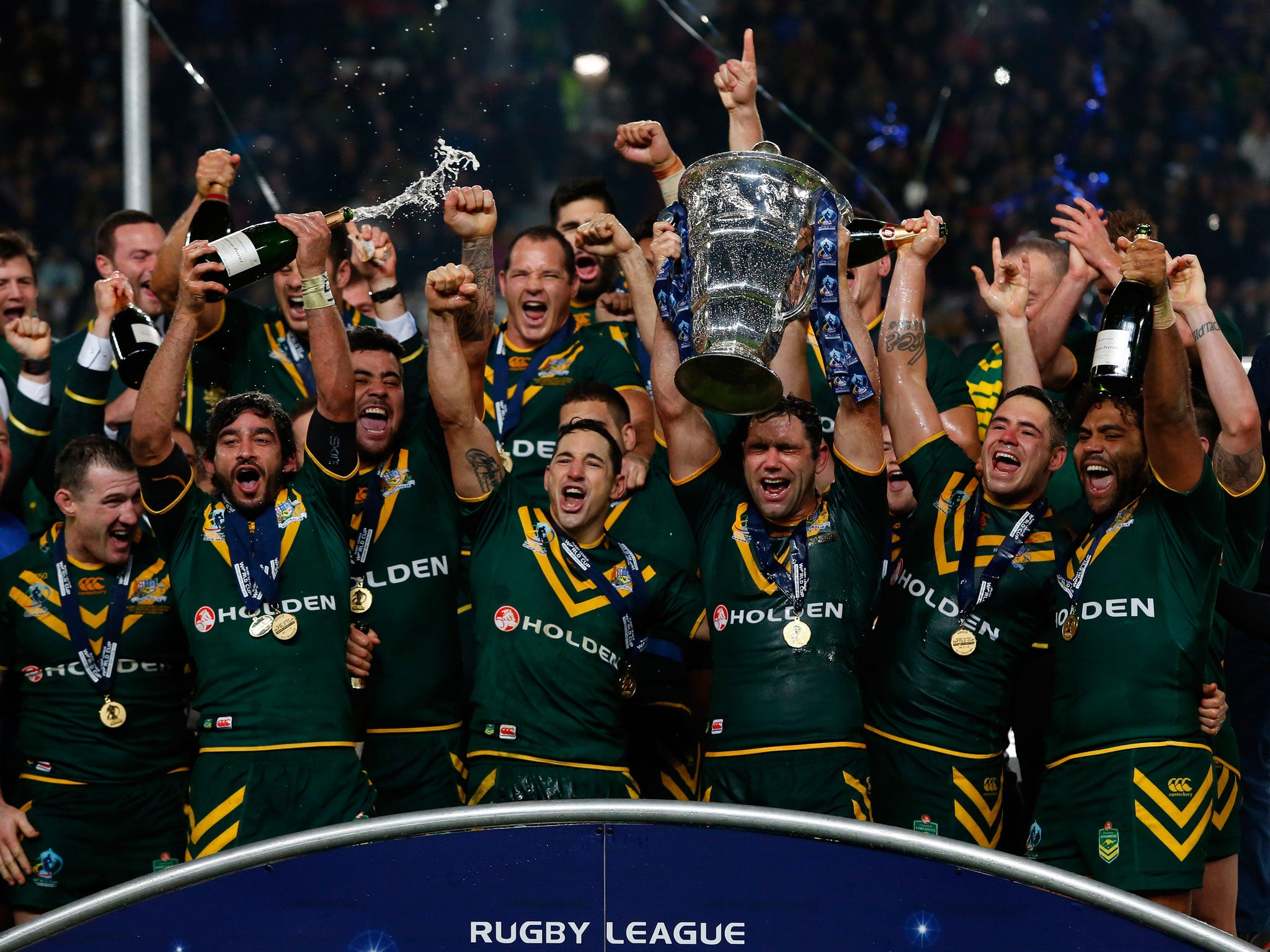Rugby League World Cup: Now we know – no one can live with Kangaroos

Your support helps us to tell the story
From reproductive rights to climate change to Big Tech, The Independent is on the ground when the story is developing. Whether it's investigating the financials of Elon Musk's pro-Trump PAC or producing our latest documentary, 'The A Word', which shines a light on the American women fighting for reproductive rights, we know how important it is to parse out the facts from the messaging.
At such a critical moment in US history, we need reporters on the ground. Your donation allows us to keep sending journalists to speak to both sides of the story.
The Independent is trusted by Americans across the entire political spectrum. And unlike many other quality news outlets, we choose not to lock Americans out of our reporting and analysis with paywalls. We believe quality journalism should be available to everyone, paid for by those who can afford it.
Your support makes all the difference.In the cold light of day, there was only one thing seriously wrong with the Rugby League World Cup. Australia were just too good.
By beating the holders, New Zealand, 34-2 at Old Trafford on Saturday, the clinical Kangaroos underlined their supremacy in the world game.If there is one statistic that illustrates the extent of that supremacy, it is that the first group game against England was the last time they conceded a try. For just about all of those five games and a few minutes, they have looked as though they might never let in a try again. It is an unprecedented stranglehold.
Not that the 2013 World Cup-winners are all about rugged defence. On top of their formidable organisation and suffocating tackling, they have a wealth of players who can generate moments of brilliance.
Johnathan Thurston was the outstanding player again at Old Trafford, the way he ran the ball at the weak points in the New Zealand line emphasising his place in the Australian half-back line of succession that runs from Wally Lewis and Peter Sterling, through Allan Langer, Andrew Johns and Darren Lockyer.
Billy Slater was as dynamic as ever, despite the worries about his knee, and Australia seem to have stumbled upon Jarryd Hayne’s ideal Test position in the centres.
It is not all about the flashy, eye-catching players, of course. Take Matt Scott, for instance; there has probably never been a more under-rated Aussie Test prop. He defines the energy and efficiency of this particular Australian side as well as anyone.
As for the calculations that revealed this line-up to have the highest average age of any team they have ever put onto the field, what they have proved is that there is no substitute for know-how. Their coach, Tim Sheens, no spring chicken himself, has it abundance – and it showed.
But what of the Kiwis? What indeed. They simply never turned up and never got into the game. Their plight was summed up by the performance of their potential match-winner, Sonny Bill Williams, who had a game to forget, making some glaring errors.
As the tournament gathered momentum, he had become more and more of an influence, while still looking as though he had another gear to click into. He did, but it was reverse.
He described himself as “heartbroken”. You may or may not accept rugby league’s description of itself as The Greatest Game of All but, as SBW found out, there are not many better at bringing you back down to earth with an almighty thump.
There are not many sports, either, which could fill Old Trafford for a match with no local interest. That enthusiasm was symptomatic of the overall success of the tournament, with good crowds and plenty of exciting contests, thrilling play and even some surprises. It ended with a slight sense of anti-climax because the final was just too one-sided.
Stephen Kearney’s Kiwis were not helped by an early injury to Roger Tuivasa-Sheck and a subsequent reshuffle, but all their key players under-performed on the big occasion. Most of the thousands who have followed the World Cup around venues familiar and unfamiliar will have favourite memories from the earlier rounds. Games played in such diverse places as Rochdale, Hull, Workington and Bristol were well supported and fascinating.
The organisation of the tournament was as tight as the organisation of the Australian defence and there is a good deal of pride within rugby league at putting on such a good show. The profits now need to be invested in global development, under the stewardship of a newly solvent International Federation.
On a more parochial level, it will be interesting to see what impact the World Cup will have on the standing of the under-fire RFL chief executive, Nigel Wood. As tournament director, some of the stardust could rub off on him; more is likely to settle, however, on the impressive organiser, Sally Bolton.
Rugby league world cup: winners and losers
Best player: Johnathan Thurston now ranks among Australia’s best ever
Biggest disappointment: Wales in the group stage, Sonny Bill Williams in the final
Biggest over-achievers: USA
Best try: Roger Tuivasa-Sheck from Dean Whare’s miracle pass in New Zealand’s semi-final win over England
Biggest blunder: Jordan Rapana of the Cook Islands, who threw the ball away over the try-line against Tonga
Most significant blunder:Kevin Sinfield’s missed tackle for England against New Zealand
Best newcomer: Anthony Milford (Samoa)
Best coach: Terry Matterson (USA)
Best game: New Zealand v England at Wembley
Join our commenting forum
Join thought-provoking conversations, follow other Independent readers and see their replies
Comments